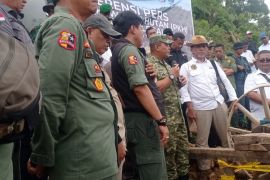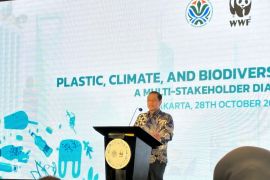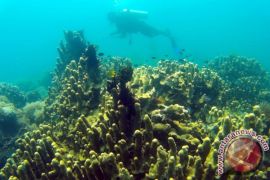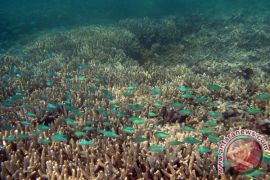"The trend is relatively stable and currently, the average is 60 percent," CTC Bali marine conservation advisor Marthen Welly said in Denpasar on Monday.
According to him, the coral reef cover in the group of three islands — Nusa Penida, Nusa Ceningan, and Nusa Lembongan — is relatively good though they are currently a marine tourism magnet in Bali.
He informed that a coral reef cover of 0–25 percent is classified as poor, 25–50 percent is classified as moderate, and above 50 percent indicates healthy coral reefs that can grow well.
However, he said, 40 percent of the waters in the Nusa Penida Marine Conservation Area are not yet covered by coral reefs because of damage to coral reefs and natural sandy underwater conditions.
To increase the coral reef cover, he said, restoration efforts need to be carried out more intensively.
Since three years ago, his party has been working to restore the reef by placing one thousand reef star-shaped coral restoration containers over the equivalent of an area of around 2 thousand square meters in waters where the coral reefs have been damaged, namely in Toya Pakeh and Ped villages.
The marine activist explained that damage to coral reefs is caused by factors such as human activities and natural disasters, like floods, which cause sediments to cover coral reefs.
To monitor the coral reefs, Welly said that his party uses the point intercept transect (PIT) method at 14 permanent points with different conditions that represent Nusa Penida waters.
He explained that the 14 points include those that are famous diving destinations, for example, Toya Pakej, Crystal Bay, Manta Point, Ped, and Lembongan.
During each monitoring activity using the PIT method, the team stretches a rope measuring 150 meters in length to make it easier to record coral reef types and their condition.
Ropes are also placed at depths of 3 meters and 10 meters, in keeping with international standards, to represent shallow and deep waters.
"From that 150 meters, we will calculate the total percentage of dead coral, live coral, algae, and sand," he informed.
During monitoring, the team found that Nusa Penida's coral reefs were least attacked by diseases, including coral white band disease and coral black band disease.
"We don't see many diseased coral reefs in Nusa Penida; it's still at the lower limit and can be tolerated," he informed.
He further said that the causes of coral diseases are pollution, liquid waste, and plastic waste.
As per the Ministry of Marine Affairs and Fisheries, the Nusa Penida Marine Conservation Area covers an area of 20,057 hectares, and consists of the islands of Nusa Penida, Nusa Lembongan, and Nusa Ceningan.
Based on Ministerial Decree of Marine Affairs and Fisheries Number 24 of 2014, the Nusa Penida Aquatic Conservation Area is being managed as an aquatic tourism park.
Related news: Ministry leads coral fragment transplantation in East Nusa Tenggara
Related news: S Kalimantan develops conservation-based artificial coral reef program
Related news: Bappenas ensures economic, ecological balance in marine conservation
Translator: Dewa Ketut Sudiarta Wiguna, Cindy Frishanti Octavi
Editor: Azis Kurmala
Copyright © ANTARA 2024







